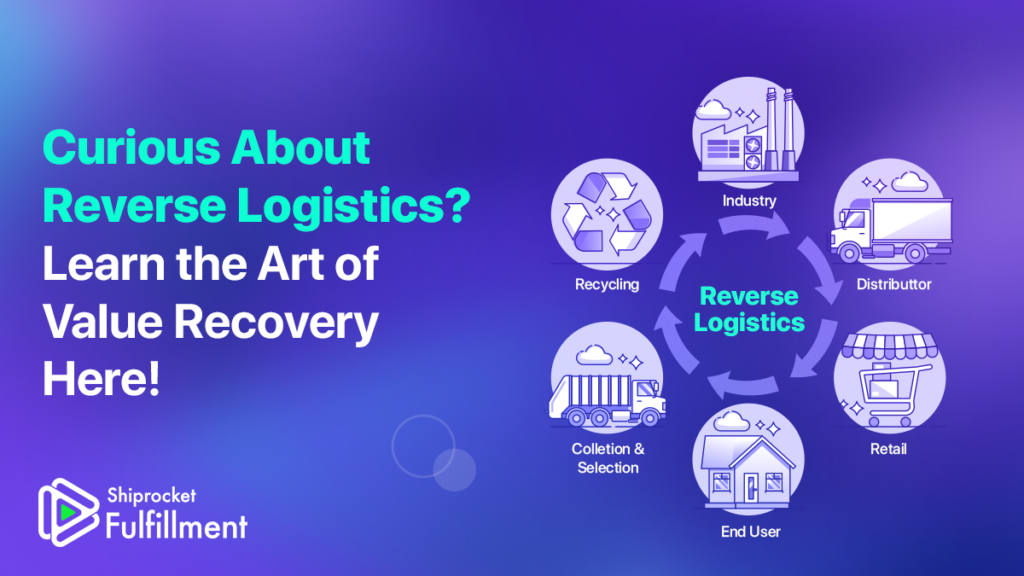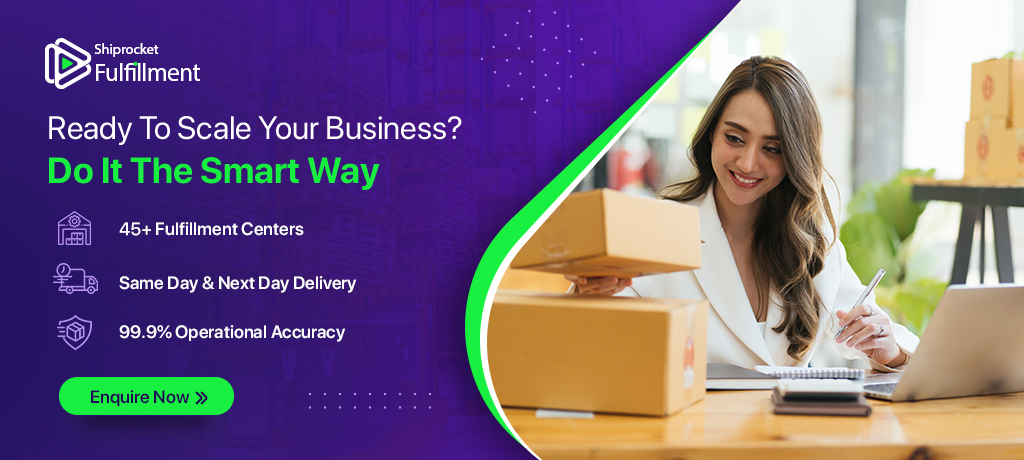Reverse logistics is the sequence of processes and activities involved in managing product returns, repairs, recycling, and disposal. It is a complex yet vital aspect of the supply chain that requires careful attention and effective strategies. In this blog, we are going to explore how reverse logistics works, the various types in which it can be used, and strategies businesses can use to maximise efficient delivery.

Definition and Process of Reverse Logistics
Reverse logistics, put simply, refers to the management of products and materials moving in the opposite direction of the traditional supply chain. It involves the handling of returned products, product recalls, repairs, refurbishment, recycling, and proper disposal.
To illustrate, let’s consider a scenario where a customer purchases a product online but, upon receiving it, realises it doesn’t meet their expectations. They initiate a return, and this is where reverse logistics comes into play. The returned product goes through a series of stages, including thorough inspection, effective sorting, appropriate disposition, and ultimately reintegration into the supply chain or responsible disposal. It is a comprehensive process that demands efficient management to minimise costs and maximise value recovery.
Importance of Reverse Logistics to Your Business
Reverse logistics is not just a necessary part of the supply chain; it is also an opportunity for businesses to enhance their operations and strengthen customer relationships. By effectively managing reverse logistics, businesses can improve customer satisfaction and retention. When customers have a smooth and hassle-free return experience, they are more likely to trust the brand to make future purchases. Additionally, efficient reverse logistics can lead to cost savings for businesses. By optimising processes, reducing waste, and recapturing value from returned products, organisations can minimise financial losses and maximise their overall profitability. In addition to the financial benefits, reverse logistics also contributes to environmental sustainability. By appropriately handling returns, recycling materials, and promoting responsible disposal, businesses actively contribute to preserving the environment and reducing their ecological footprint.

Types and Components of Reverse Logistics
Reverse logistics includes various types, also known as reverse logistics components, that revolve around returns management and return policies and procedures (RPP). They encompass several aspects, such as remanufacturing, packaging, addressing unsold goods, and managing delivery issues. Reverse logistics also covers leases, repairs, and the retirement of products, depending on the nature of the returned products and their condition. Let us explore some of the common reverse logistics components:
1. Customer Returns
This is perhaps the most familiar component of reverse logistics. When customers return products due to reasons like dissatisfaction, wrong size, or defects, effective management is important to keep things running smoothly.
2. Product Recalls
In cases where products pose safety risks or fail to meet quality standards, recalls are initiated. A product recall refers to the action taken by a company or manufacturer to retrieve a specific product from the market. Reverse logistics plays a vital role in managing the return, replacement, or repair of these recalled products, ensuring customer safety and brand reputation.
3. Service and Repair Operations
Products that require repair or maintenance fall under this component of reverse logistics. It involves managing the flow of products from customers to service centers or repair facilities and ensuring timely repairs or replacements.
4. Warranty Management
Warranty claims involve the management of products that experience malfunctions or defects within the warranty period. Reverse logistics ensures that customers receive the necessary support and that faulty products are repaired, replaced, or refunded accordingly.
5. End-of-Life Product Management
When products reach the end of their lifecycle or become obsolete, reverse logistics comes into play. It involves proper disposal, recycling, or repurposing of these products, adhering to environmental regulations and sustainability practices.
The above five components require specific processes, expertise, and considerations to ensure efficient handling and optimal outcomes. Businesses must tailor their reverse logistics strategies to accommodate the unique requirements of each component.
Effective Strategies for Streamlining Reverse Logistics
To master reverse logistics and derive maximum value from the process, businesses must implement effective strategies that streamline operations and optimise outcomes. Here are some strategies to consider:
1. Develop a Robust Reverse Logistics Management System
Implementing a well-designed management system ensures that reverse logistics processes are well-defined, efficient, and integrated into the overall supply chain operations. It involves establishing clear roles and responsibilities, designing standard operating procedures, and leveraging technology for tracking and visibility.
2. Clear and Efficient Returns Policies
Having well-communicated and customer-friendly returns policies can significantly impact the reverse logistics process. By providing clear instructions, streamlined return authorisation procedures, and flexible return options, businesses can simplify the returns process and reduce customer dissatisfaction. A key element in this strategy is providing prepaid return labels, which not only enhance convenience for customers but also ensure that returned items are directed to the right location for processing.
3. Collaborate with Suppliers and Partners
Effective collaboration with suppliers, service providers, and logistics partners is crucial for smooth reverse logistics operations. Building strong relationships and establishing clear communication channels ensures efficient coordination and timely resolution of issues. Collaborative efforts can lead to streamlined returns handling, faster repairs, and optimised transportation.
4. Leverage Technology for Tracking and Visibility
Technology plays a pivotal role in modern reverse logistics. Implementing advanced tracking systems, barcode scanning, and real-time data analytics provide visibility into product returns, inventory, and disposition status. This allows businesses to identify bottlenecks, track performance, and make data-driven decisions for continuous improvement.
5. Optimise Transportation and Inventory Management
Reverse logistics involves the movement of products from customers back to the appropriate location, whether it be a warehouse, repair center, or recycling facility. Optimising transportation routes, consolidating shipments, and effectively managing inventory ensure cost-effective operations and minimise delays.
Additionally, analysing data related to returns can help identify the root causes of such returns and uncover opportunities for improvement, so businesses can make informed decisions to enhance their efficiency and improve customer satisfaction.
Anticipated Trends and Innovations in Reverse Logistics
The field of reverse logistics is constantly evolving, driven by technological advancements and changing customer expectations. Here are some anticipated trends and logistics innovations that are shaping the future of reverse logistics:
1. Artificial Intelligence and Machine Learning: These technologies are increasingly being used for predictive analytics in reverse logistics. By analysing historical data and patterns, AI and machine learning algorithms can help forecast returns, identify potential issues, and optimise processes for better decision-making.
2. Automation and Robotics: Automation and robotics are revolutionising the sorting and handling of returned products. Automated systems can quickly and accurately sort products based on their condition, allowing for efficient routing to appropriate destinations such as repair centers, recycling facilities, or resale channels.
3. Blockchain Technology: Blockchain is gaining traction in reverse logistics due to its ability to enhance transparency, traceability, and trust. It can provide a secure and immutable record of product history, including information about returns, repairs, and refurbishments, ensuring authenticity and reducing the risk of counterfeit products entering the supply chain.
4. Sustainability Practices: With growing environmental concerns, integrating sustainability practices into reverse logistics processes is becoming a priority. This includes promoting recycling, encouraging responsible disposal methods, and exploring eco-friendly packaging options. Organisations that adopt sustainable practices in reverse logistics can meet regulatory requirements, enhance their brand image, and contribute to a greener future.
Conclusion
Mastering reverse logistics is essential for businesses aiming to optimise their supply chain operations, reduce costs, and enhance customer satisfaction. By understanding the definition, process, and components of reverse logistics, businesses can implement effective strategies to streamline operations and maximise value recovery. Anticipating emerging trends and innovations in reverse logistics allows organisations to stay ahead of the curve and leverage technological advancements for continuous improvement. Remember, reverse logistics is not just about managing product returns; it is an opportunity to turn challenges into opportunities and create a sustainable and customer-centric supply chain. To know more about these services, speak to our experts at Shiprocket and receive customised solutions for your business needs!

Frequently Asked Questions(FAQs)
Traditional logistics focuses on the flow of goods and services from the point of origin to customer’s destination. Reverse logistics focuses on managing product returns, recycling them, or repairing them.
The cost of reverse logistics varies depending on factors such as the volume of returns, transportation expenses, processing fees, and disposal or refurbishment costs.
Reverse logistics mitigates risk by managing product returns, reducing customer dissatisfaction, optimising inventory management, minimising waste and disposal costs. It also maximises asset recovery and value.





